1) It's a hack, but it works!
Use it if you doesn't use UIAlertView or KGStatusBar!!!
#import <objc/runtime.h>
@interface UIScreen (I_love_ios_7)
- (CGRect)bounds2;
- (CGRect)boundsForOrientation:(UIInterfaceOrientation)orientation;
@end
@implementation UIScreen (I_love_ios_7)
- (CGRect)bounds2
{
return [self boundsForOrientation:[[UIApplication sharedApplication] statusBarOrientation]];
}
- (CGRect)boundsForOrientation:(UIInterfaceOrientation)orientation
{
CGRect resultFrame = [self bounds2];
if(UIInterfaceOrientationIsLandscape(orientation))
resultFrame.size.width -= 20;
else
resultFrame.size.height -= 20;
return resultFrame;
}
@end
void Swizzle(Class c, SEL orig, SEL new)
{
Method origMethod = class_getInstanceMethod(c, orig);
Method newMethod = class_getInstanceMethod(c, new);
if(class_addMethod(c, orig, method_getImplementation(newMethod), method_getTypeEncoding(newMethod)))
class_replaceMethod(c, new, method_getImplementation(origMethod), method_getTypeEncoding(origMethod));
else
method_exchangeImplementations(origMethod, newMethod);
}
@implementation AppDelegate
- (BOOL)application:(UIApplication *)application didFinishLaunchingWithOptions:(NSDictionary *)launchOptions
{
if ([[[UIDevice currentDevice] systemVersion] floatValue] >= 7) {
Swizzle([UIScreen class], @selector(bounds2), @selector(bounds));
[application setStatusBarStyle:UIStatusBarStyleLightContent];
self.window.clipsToBounds =YES;
[[NSNotificationCenter defaultCenter] addObserver:self
selector:@selector(applicationDidChangeStatusBarOrientation:)
name:UIApplicationWillChangeStatusBarOrientationNotification
object:nil];
NSDictionary* userInfo = @{UIApplicationStatusBarOrientationUserInfoKey : @([[UIApplication sharedApplication] statusBarOrientation])};
[[NSNotificationCenter defaultCenter] postNotificationName:UIApplicationWillChangeStatusBarOrientationNotification
object:nil
userInfo:userInfo];
}
return YES;
}
- (void)applicationDidChangeStatusBarOrientation:(NSNotification *)notification
{
UIInterfaceOrientation orientation = [[notification.userInfo objectForKey: UIApplicationStatusBarOrientationUserInfoKey] intValue];
CGSize size = [[UIScreen mainScreen] boundsForOrientation:orientation].size;
int w = size.width;
int h = size.height;
float statusHeight = 20.0;
switch(orientation){
case UIInterfaceOrientationPortrait:
self.window.frame = CGRectMake(0,statusHeight,w,h);
break;
case UIInterfaceOrientationPortraitUpsideDown:
self.window.frame = CGRectMake(0,0,w,h);
break;
case UIInterfaceOrientationLandscapeLeft:
self.window.frame = CGRectMake(statusHeight,0,w,h);
break;
case UIInterfaceOrientationLandscapeRight:
self.window.frame = CGRectMake(0,0,w,h);
break;
}
}
@end
2) Create category, and always use contentView instead of view
@interface UIViewController(iOS7_Fix)
@property (nonatomic, readonly) UIView* contentView;
- (void)updateViewIfIOS_7;
@end
@implementation UIViewController(iOS7_Fix)
static char defaultHashKey;
- (UIView *)contentView
{
return objc_getAssociatedObject(self, &defaultHashKey)?: self.view;
}
- (void)setContentView:(UIView *)val
{
objc_setAssociatedObject(self, &defaultHashKey, val, OBJC_ASSOCIATION_RETAIN_NONATOMIC) ;
}
- (void)updateViewIfIOS_7
{
if([[[UIDevice currentDevice] systemVersion] floatValue] < 7 || objc_getAssociatedObject(self, &defaultHashKey))
return;
UIView* exchangeView = [[UIView alloc] initWithFrame:self.view.bounds];
exchangeView.autoresizingMask = self.view.autoresizingMask;
exchangeView.backgroundColor = [UIColor blackColor];
UIView* view = self.view;
if(self.view.superview){
[view.superview addSubview:exchangeView];
[view removeFromSuperview];
}
[exchangeView addSubview:view];
self.view = exchangeView;
CGRect frame = self.view.bounds;
frame.origin.y += 20.0;
frame.size.height -= 20.0;
view.frame = frame;
view.autoresizingMask = UIViewAutoresizingFlexibleWidth | UIViewAutoresizingFlexibleHeight;
[self setContentView:view];
}
In every UIViewController:
- (void)viewDidLoad
{
[super viewDidLoad];
[self updateViewIfIOS_7];
UILabel* lab = [[UILabel alloc] initWithFrame:CGRectMake(0, 0, 130, 30)];
lab.backgroundColor = [UIColor yellowColor];
[self.contentView addSubview:lab];
//...
}



